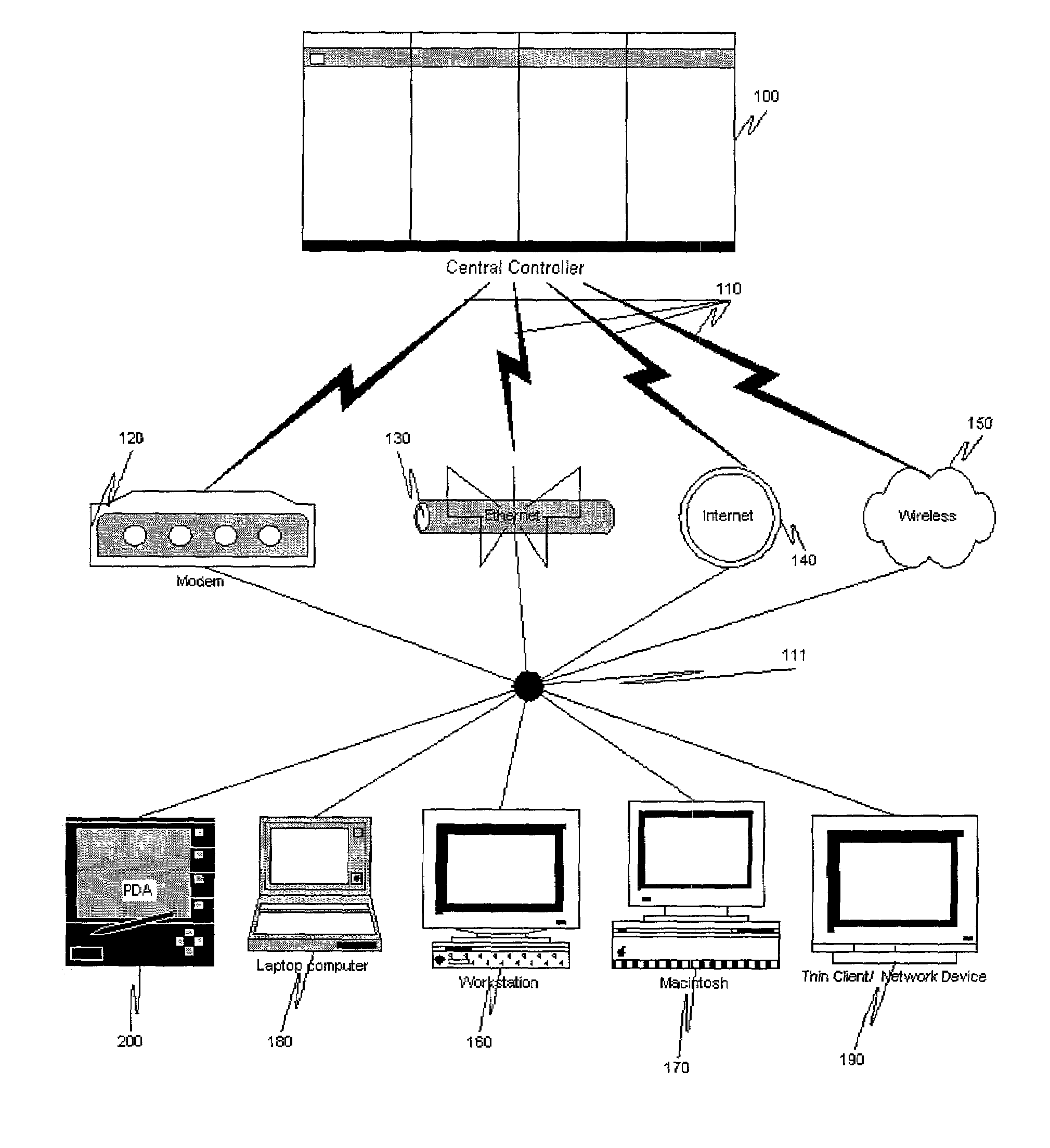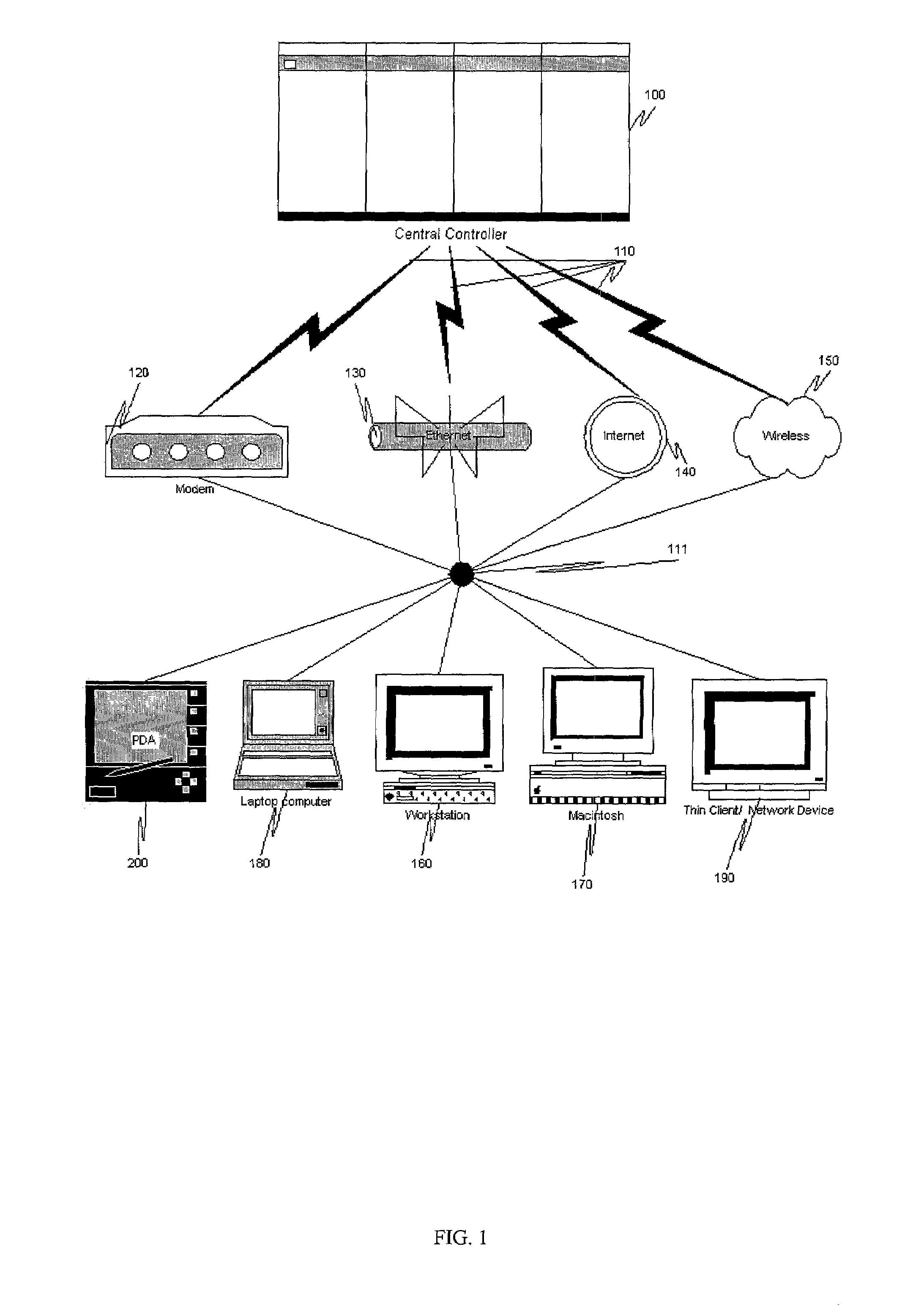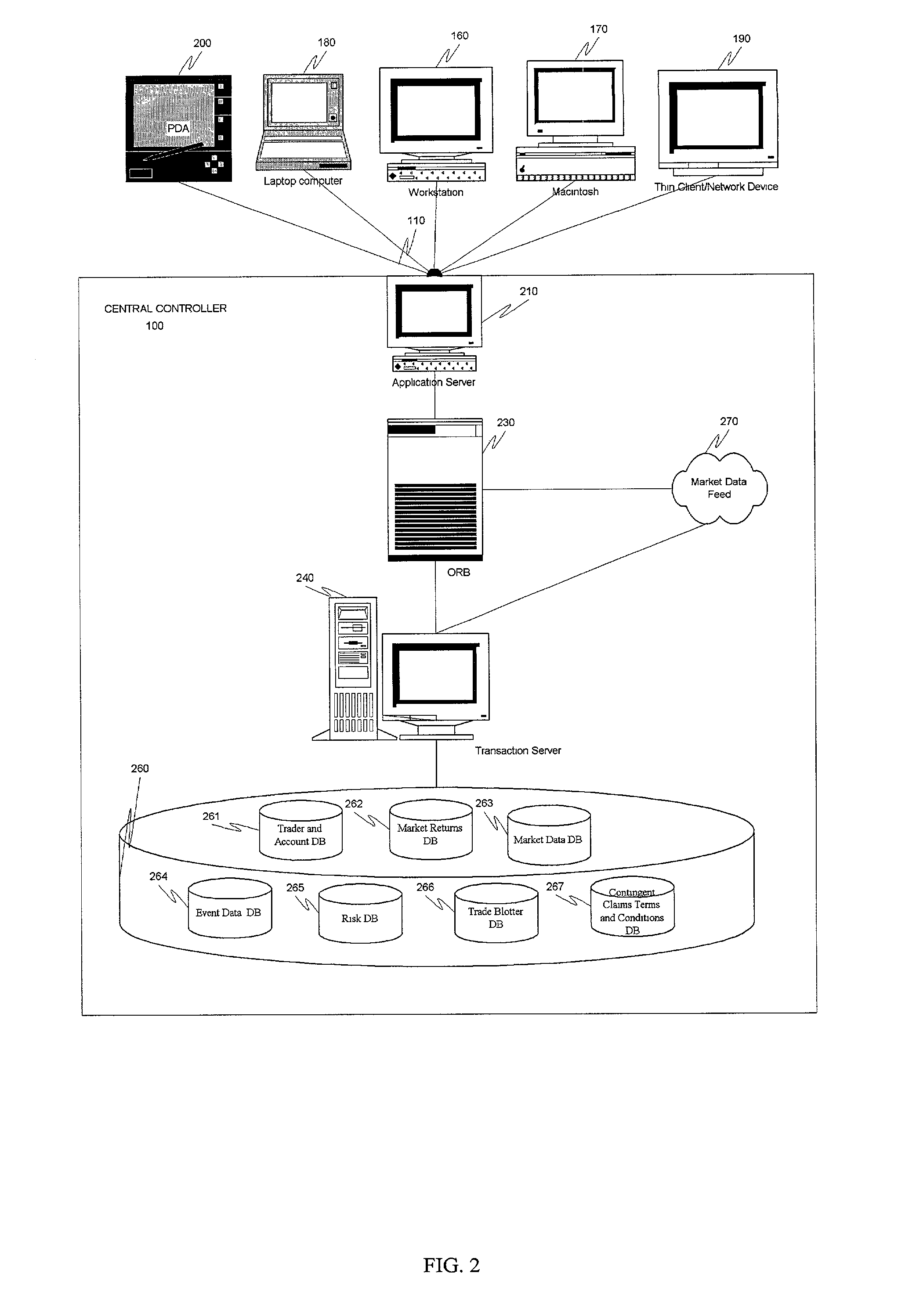Digital options having demand-based, adjustable returns, and trading exchange therefor
a technology of demand-based and adjustable returns, applied in the field of demand-based trading, can solve the problems of laborious trade processing, over-all increase in investor risk aversion, and exposure to the risk of going bankrupt, and achieve the effect of reducing transaction costs
- Summary
- Abstract
- Description
- Claims
- Application Information
AI Technical Summary
Benefits of technology
Problems solved by technology
Method used
Image
Examples
example 3.1.2
Multiple Multi-state Investments
[0321]If numerous multi-state investments are made for a group of DBAR contingent claims, then in a preferred embodiment an iterative procedure can be employed to allocate all of the multi-state investments to their respective constituent states. In preferred embodiments, the goal would be to allocate each multi-state investment in response to changes in amounts invested during the trading period, and to make a final allocation at the end of the trading period so that each multi-state investment generates the payouts desired by the respective trader. In preferred embodiments, the process of allocating multi-state investments can be iterative, since allocations depend upon the amounts traded across the distribution of states at any point in time. As a consequence, in preferred embodiments, a given distribution of invested amounts will result in a certain allocation of a multi-state investment. When another multi-state investment is allocated, the distr...
example 3.1.3
Alternate Price Distributions
[0328]Assumptions regarding the likely distribution of traded amounts for a group of DBAR contingent claims may be used, for example, to compute returns for each defined state per unit of amount invested at the beginning of a trading period (“opening returns”). For various reasons, the amount actually invested in each defined state may not reflect the assumptions used to calculate the opening returns. For instance, investors may speculate that the empirical distribution of returns over the time horizon may differ from the no-arbitrage assumptions typically used in option pricing. Instead of a lognormal distribution, more investors might make investments expecting returns to be significantly positive rather than negative (perhaps expecting favorable news). In Example 3.1.1, for instance, if traders invested more in states above $85 for the price of MSFT common stock, the returns to states below $85 could therefore be significantly higher than returns to s...
example 3.1.4
States Defined for Return Uniformity
[0332]It is also possible in preferred embodiments of the present invention to define states for a group of DBAR contingent claims with irregular or unevenly distributed intervals, for example, to make the traded amount across the states more liquid or uniform. States can be constructed from a likely estimate of the final distribution of invested amounts in order to make the likely invested amounts, and hence the returns for each state, as uniform as possible across the distribution of states. The following table illustrates the freedom, using the event and trading period from Example 3.1.1, to define states so as to promote equalization of the amount likely to be invested in each state.
[0333]
TABLE 3.1.4-1State Definition to Make Likely Demand Uniform Across StatesInvested Amount in StateReturn Per Unit if StateStates(′000)Occurs(0,81.403]5,00019(81.403,82.181]5,00019(82.181,82.71]5,00019(82.71,83.132]5,00019(83.132,83.497]5,00019(83.497,83.826]5,...
PUM
 Login to View More
Login to View More Abstract
Description
Claims
Application Information
 Login to View More
Login to View More - R&D
- Intellectual Property
- Life Sciences
- Materials
- Tech Scout
- Unparalleled Data Quality
- Higher Quality Content
- 60% Fewer Hallucinations
Browse by: Latest US Patents, China's latest patents, Technical Efficacy Thesaurus, Application Domain, Technology Topic, Popular Technical Reports.
© 2025 PatSnap. All rights reserved.Legal|Privacy policy|Modern Slavery Act Transparency Statement|Sitemap|About US| Contact US: help@patsnap.com



